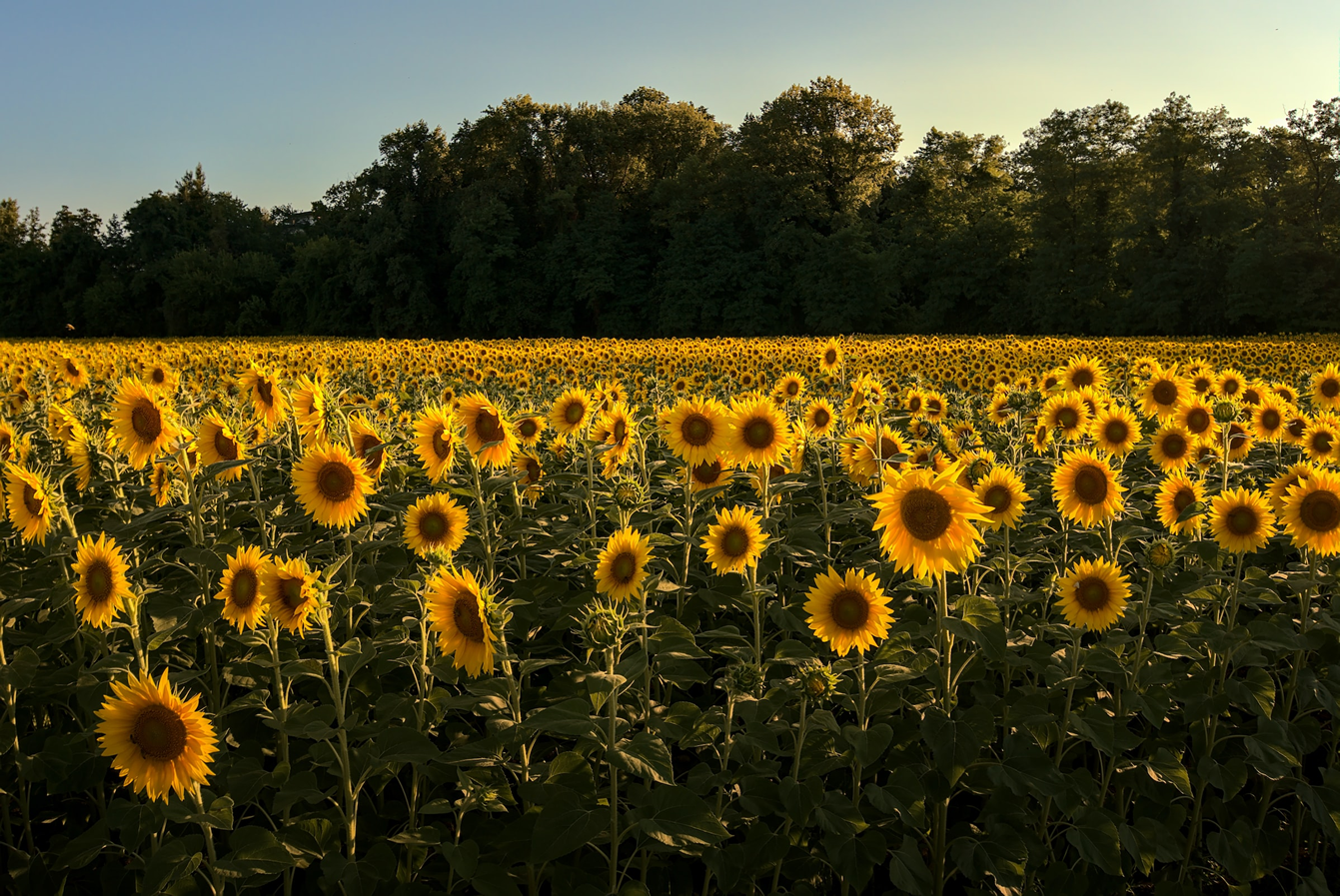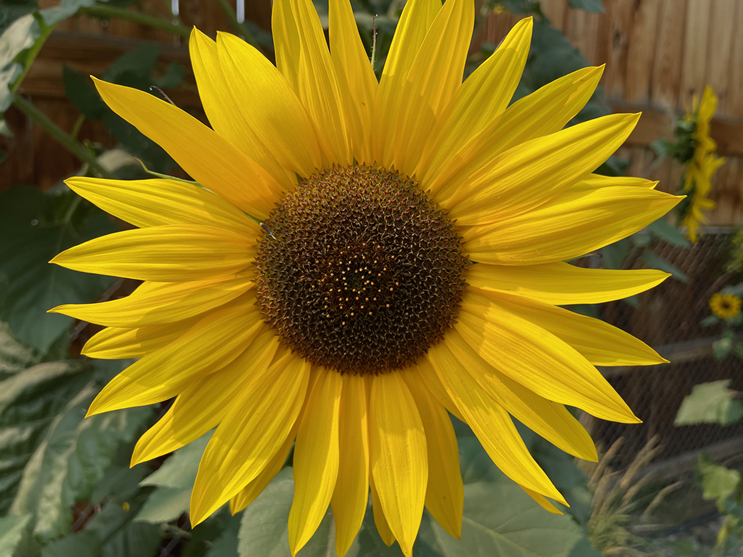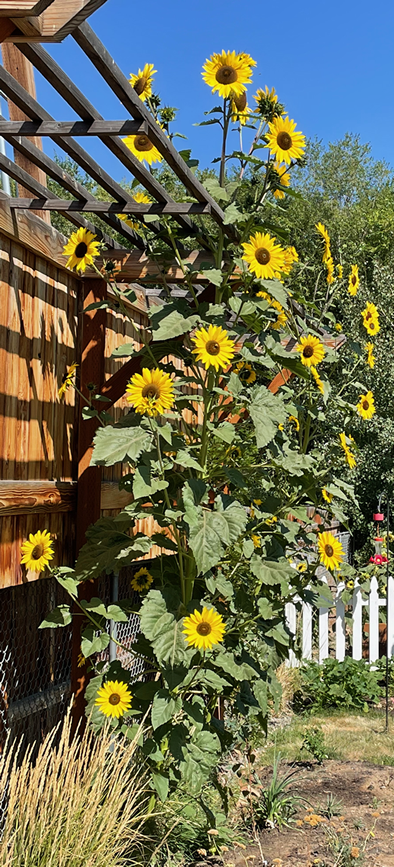Sunshine on a Stalk - The Sunflower

(Photo: matpaga on Unsplash)
By Joe Boldt
(This article originally appeared in the March/April edition of California Garden)
Once, on my way to Canada, I had the good fortune to be driving my convertible along a country road in South Dakota. On either side of the road were Sunflowers. As far as my eyes could see, miles and miles of bright yellow sunshine on a stalk. I couldn't stop grinning!
With upwards of seventy different varieties, Sunflowers are the models for diversity.

Great for bees, butterflies and birds. 'Henry Wilde' (Joe Boldt)
They can be as short as a foot or as tall as twelve. While we think of them with bright, cheery, yellow blossoms, there are many other options. Colors run the gamut from light cream, yellow, orange, to red and even brown. Some have a single, large bloom at the end of a long stalk. Others are multi-branched and bloom all along each stem. There are varieties like 'Golden Bear' that have fluffy blossoms.
Sunflowers (Helianthus) need full sun, a minimum of six hours per day. They are in the same family (Asteraceae) as Asters and Daisies. Most varieties develop a deep taproot. Given the large amount of clay in San Diego, support might be required for the tallest varieties. The shorter ones can also be grown in a pot.

Helianthus 'Henry Wilde' out doing itself to 10 feet (Joe Boldt)
Sunflowers are like a magnet for pollinators. Bees, native or otherwise, swarm to them. If you pay attention you might watch a bee stagger almost drunkenly across the bloom, gathering pollen as it goes. I plant several around my garden to help pollinate vegetables. Sunflowers are also host plants for some butterflies, like the Painted Lady.
At the end of the season, they can start to look pretty straggly. Reconsider removing them though. In addition to providing nectar, Sunflowers are a great food source for other creatures. You might spot an American Goldfinch dining on the seeds, or even eating parts of the leaves. Their hollow stems also provide overwintering space for some native bees and other insects.
The majority of Sunflowers are annuals. They grow and bloom for a season and then die. Fortunately, they are very easy to grow. Seeds can be sown directly into the ground around March or April. Moisten the soil well before planting. Place the seeds about eight inches apart. Cover them with an inch of fine soil. They can also be started in pots and transplanted. Place the seeds in a good seed starter mix about an inch deep. In the ground or in pots, keep the soil damp. Once they are growing, keep them well mulched to help keep the soil from drying out too fast. If you reseed every couple of weeks you 'll have blooms well into autumn.
Don't want to restart your Sunflowers from seed every year? Well, there are some perennial Sunflowers that do well here: Beach Sunflower (Helianthus debilis) and Ashy Sunflower (Helianthus mollis). In most cases they bloom later than their annual cousins helping to extend the flowering season. Perennial Sunflowers also have more tuberous roots than annual varieties. Some, like Jerusalem artichoke (Helianthus tuberosus) have tasty, edible roots. The only downside is they can be a tad invasive, so they may need to be dug up and divided every few years.
And, Sunflowers are so clever; they actually follow the sun during the day. The process is known as solar tracking or heliotropism. In the morning young plants face east, waiting for sunrise. Then they follow from east to west, and at night, reorient themselves to the east to be ready for another day!
So, get started now and plan for a long summer's worth of grinning!

Joe Boldt
Joe Boldt has been a Master Gardener since 2005. He enjoys cooking and raised bed gardening.

